


Canoe course
Vitrac Beynac
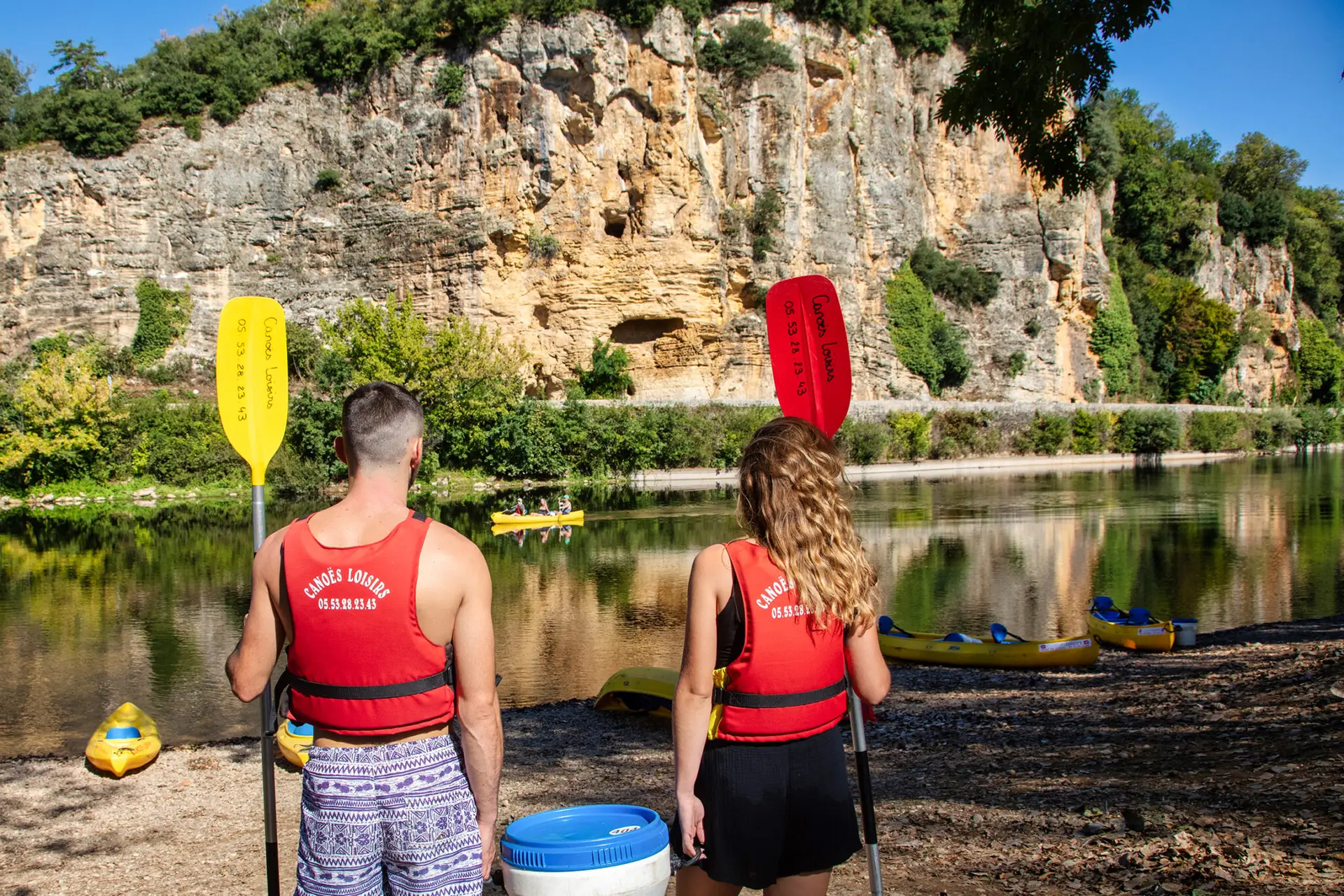
You are now at the Canoe-Loisirs boarding area in VITRAC, located before the bridge on the left bank, near the wooden chalet.
The port of Vitrac, with its lively hotel business, has a fascinating history linked to the Gabares. During the period of conflict between the Capetians and the Plantagenets, the wine trade with England created a strong demand for wood to make barrels. This led to significant commercial traffic between the timber-producing Auvergne and the wine-producing Gironde.
Gabares were boats that transported merrain (chestnut wood for barrels) and carrassonne (chestnut stakes for vineyards). Depending on where they came from, Gabares had different uses: those from the upper Dordogne were sold in pieces with their cargo, while those from the Souillac area were loaded with salt and hauled up the river by oxen along a towpath.
The Gabares' return journey was punctuated by stops at various ports, where the Gabariers negotiated and dined. Vitrac was one of the ports where this lively commercial life took place.
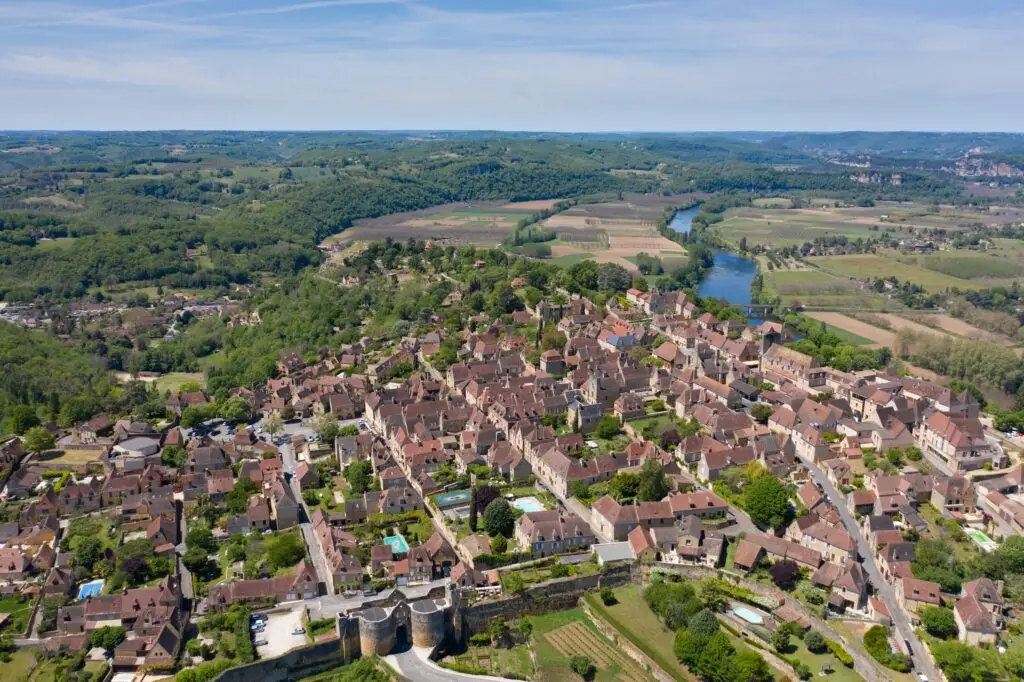
Pass under the left arch of the bridge to continue your journey. You'll then skirt a small islet, which is a nature reserve for birds where landing is prohibited, before finding one of the arms of the Dordogne on your right. The river then begins a second curve to the left. On the right bank, you'll see a cave that once served as a strategic surveillance point for the river. The Dordogne was a crucial control point, and its strategic positions were rapidly fortified during the Hundred Years' War.
In 1152, Eleanor of Aquitaine, ex-wife of Louis VII, gave Aquitaine to Henry of Plantagenet by marriage, a gift of great value! This marked the beginning of two centuries of conflict, during which the Bastide de Domme played a crucial role. It was built in 1282 by order of Philip the Fair.
Continuing on, you leave the Beau Rivage campsite on your right and take the left-hand branch of the river, which leads peacefully around a wide bend to the right, then the long straight stretch to the steep promontory of DOMME and its belvedere.
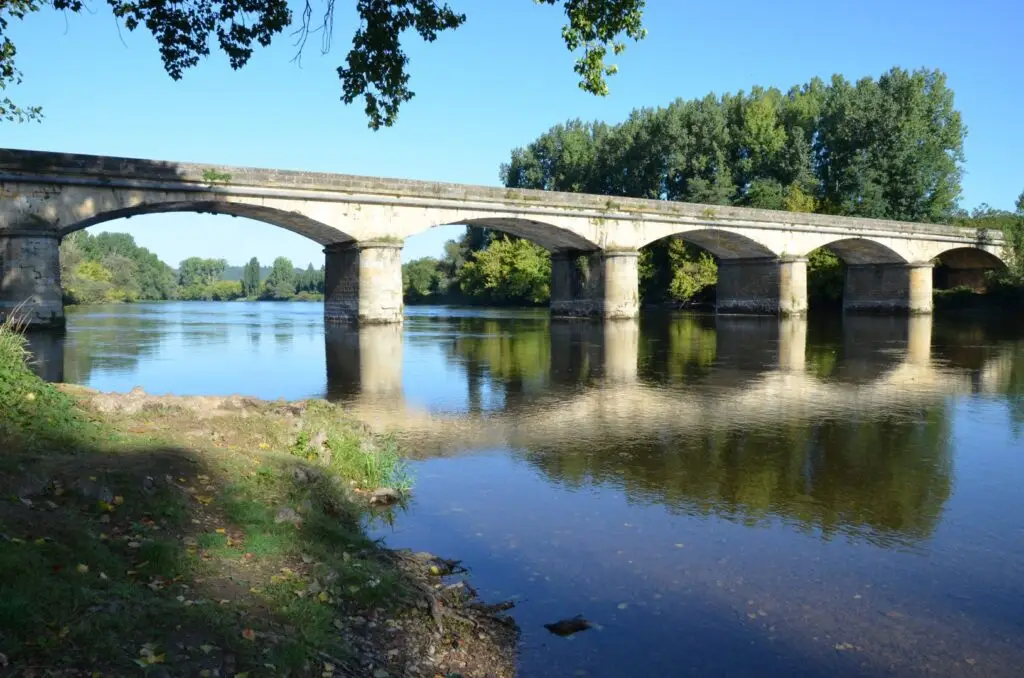
You're now at CÉNAC, the former port of DOMME, which explains the mooring rings on the bridge. Just beyond this, on the left bank, behind a small islet, is the Cénac embarkation beach.
A little further on, the water accelerates for around a hundred metres, the passage of the Pendoils. You'll notice a number of basalt boulders rising to the surface (safely, don't worry), most likely the remains of a crossing point used by Roman legions when the water level was low.
Now you're facing an imposing limestone cliff, a favorite haunt for buzzards, kites and peregrine falcons. Occasionally, if you look up, you'll be able to witness battles between birds of prey during the nesting season.
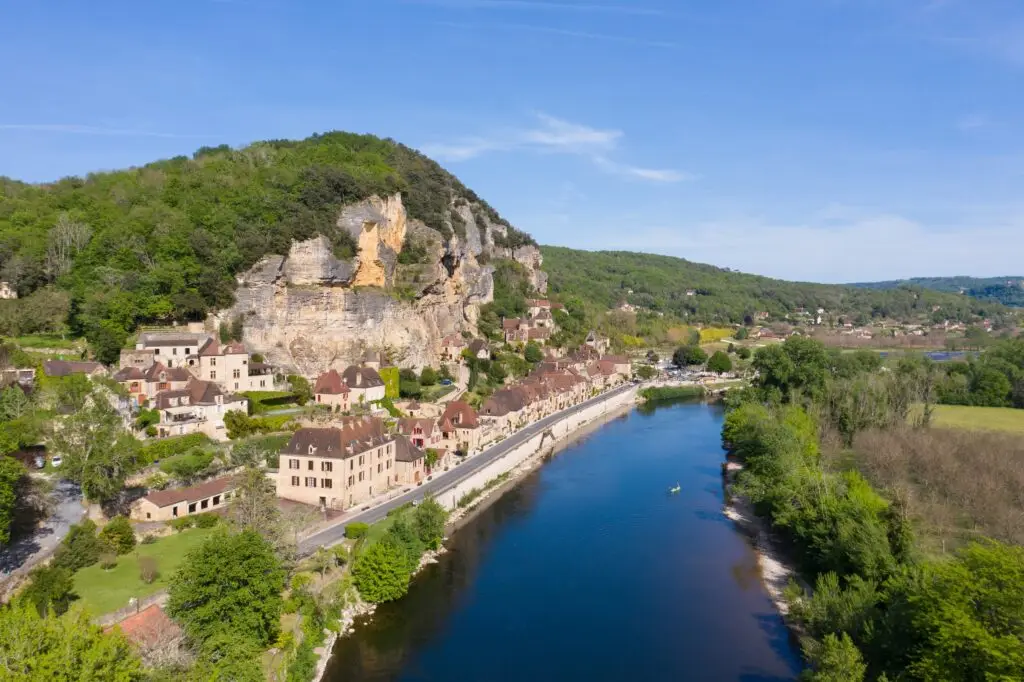
You'll soon reach the village of La Roque-Gageac, listed as one of France's most beautiful villages. A little history? We're in the middle of the Hundred Years' War! But let's go back even further, to prehistoric times... Flint tools discovered here suggest prehistoric occupation of La Roque-Gageac. And the cliffside staircase? Quite simply, these are the remains of the La Roque fortress, built to protect against Viking attacks. Later, an enclosure with fortified houses was added, serving as a refuge for the bishops of Sarlat from repeated raids.
The city was renowned for its impregnability. It was a vital port and thriving commercial center in the era of inland waterway transport (with gabares), before giving way to animal-drawn towage from 1817 onwards. Today, the village offers all the necessary services.
As you leave La Roque-Gageac, you'll pass the Château de la Malartrie (formerly called "maladerie" in medieval Occitan) on your right, followed by the beach and municipal campsite. Built between the 10th and 12th centuries as a hospital for contagious diseases, the château remained abandoned until it was bought by an industrialist in 1902. The latter undertook a restoration in Renaissance style, although the final result does not entirely respect this style! Today, the château is the residence of a family of renowned Périgord diplomats.
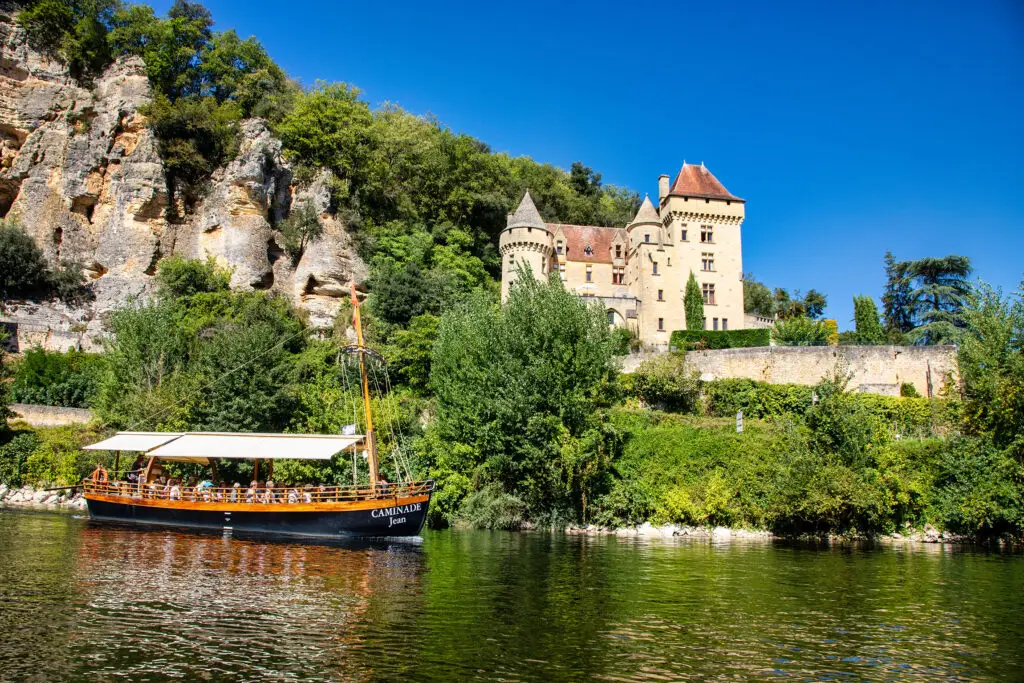
Admire the Château de la Malartrie from your canoe! Nestling on the banks of the Dordogne, this château offers a majestic view from the water. Paddle quietly while admiring its elegant architecture and enchanting natural setting.
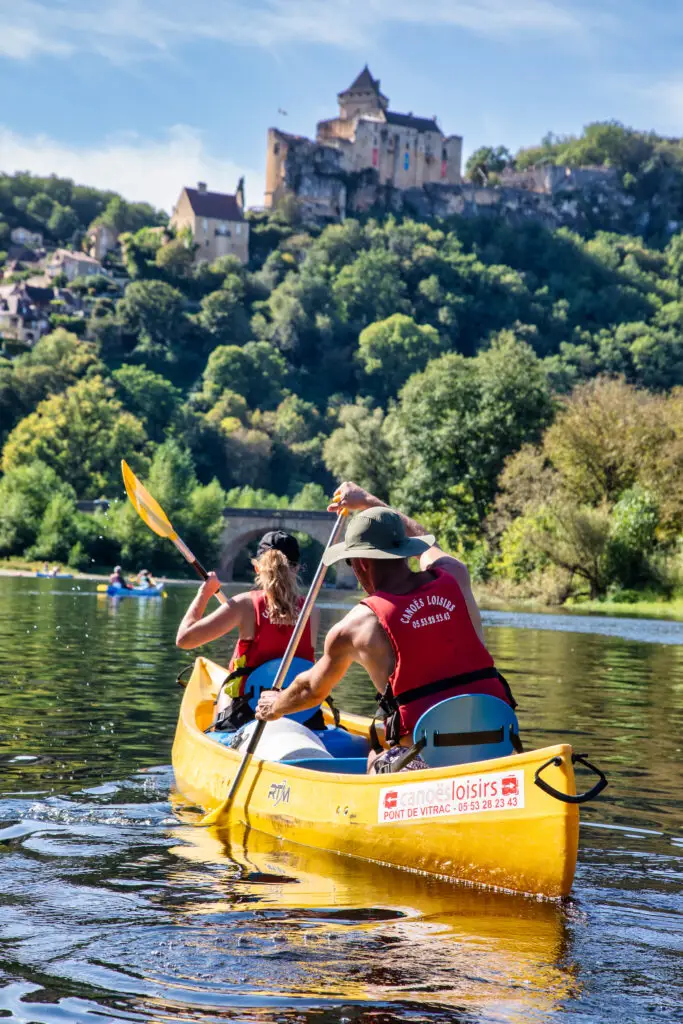
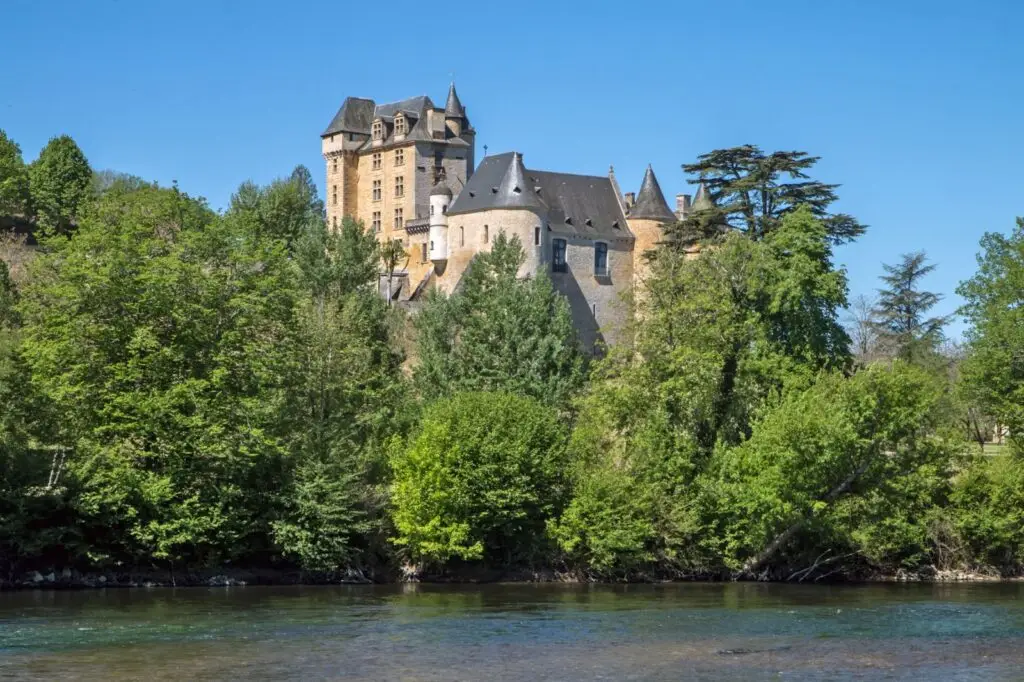
Explore the majesty of Château de Fayrac from your canoe! Glide along the serene waters of the Dordogne and admire the Renaissance château standing proudly on its banks.
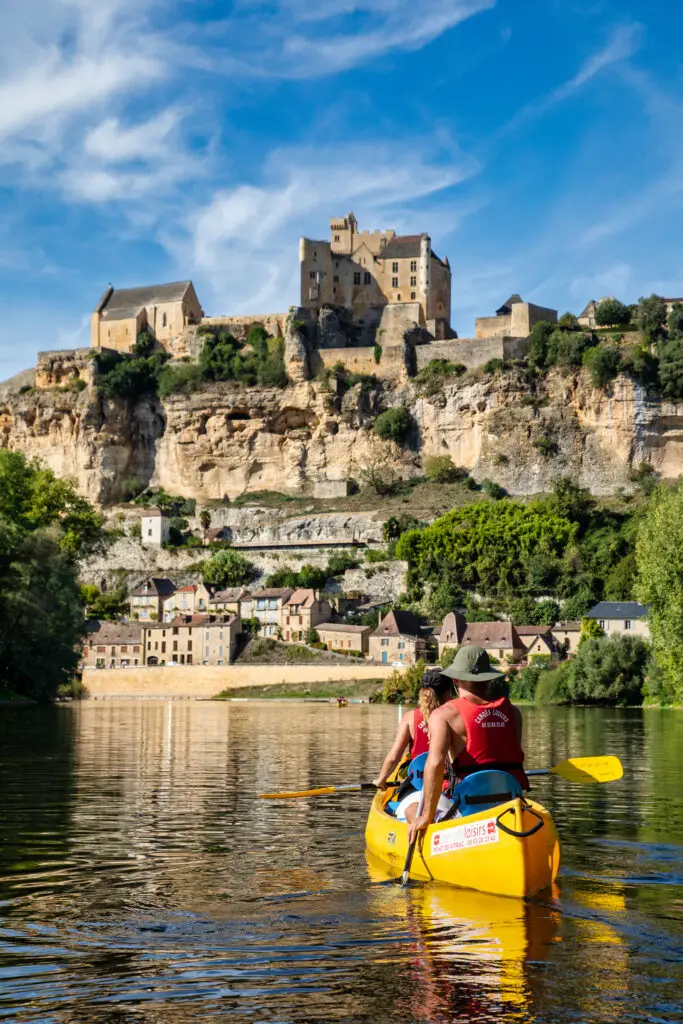
A narrow lane leads straight to Beynac, where the imposing château and chapel stand proudly. Since year 7, we've been free of the tolls and fishing rights imposed by local lords.
One of the four baronies of Périgord, the château has undergone many changes over the centuries: the keep was extended by a rectangular building in the 12th century, and the facades were embellished in the 16th century. Its dovecote perched on the cliff bears witness to its illustrious seigneurial status. Nicknamed "Satan's Ark", the beautifully preserved Château de Beynac has been used as a backdrop for many films (including Luc Besson's "Les Visiteurs II", "Joan of Arc" and Ridley Scott's "The Last Duel").
Take your time to admire the spectacle, as the finish line is around 15 minutes away. And what about the river? The river quietly continues its course, splitting into two arms as it leaves the village (the left arm is highly recommended). 20 minutes after leaving the village of Beynac, you'll reach the END POINT of this tour under the railway bridge, on the left-hand side of the riverbank.
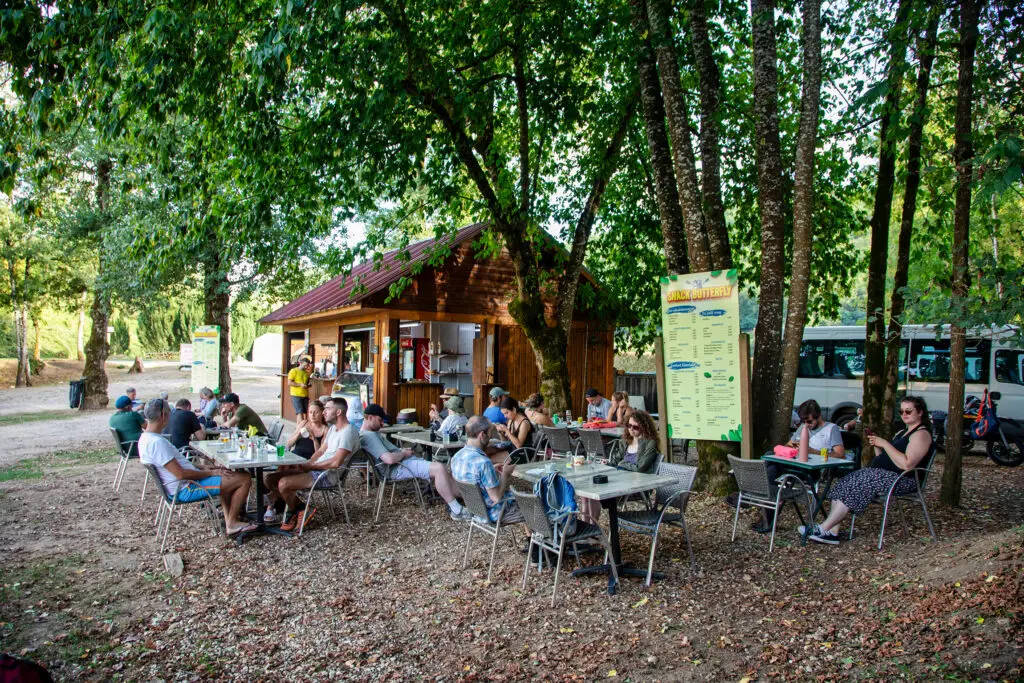
Your adventure is coming to an end!
Pull the canoes out of the water and enjoy the terrace of our cabin on arrival. A return shuttle is available every hour for your convenience. Relax and enjoy the end of this unforgettable day with Canoës Loisirs!